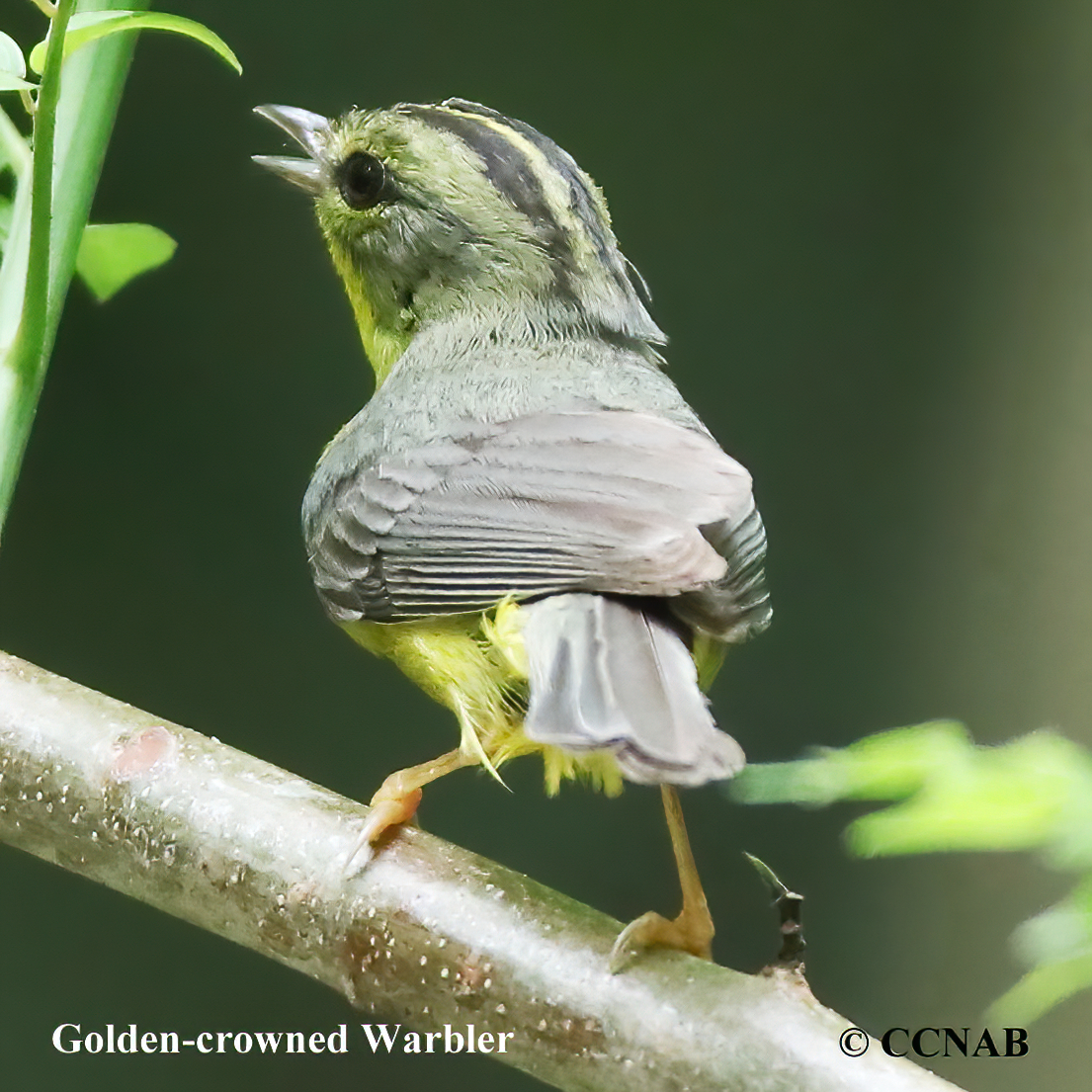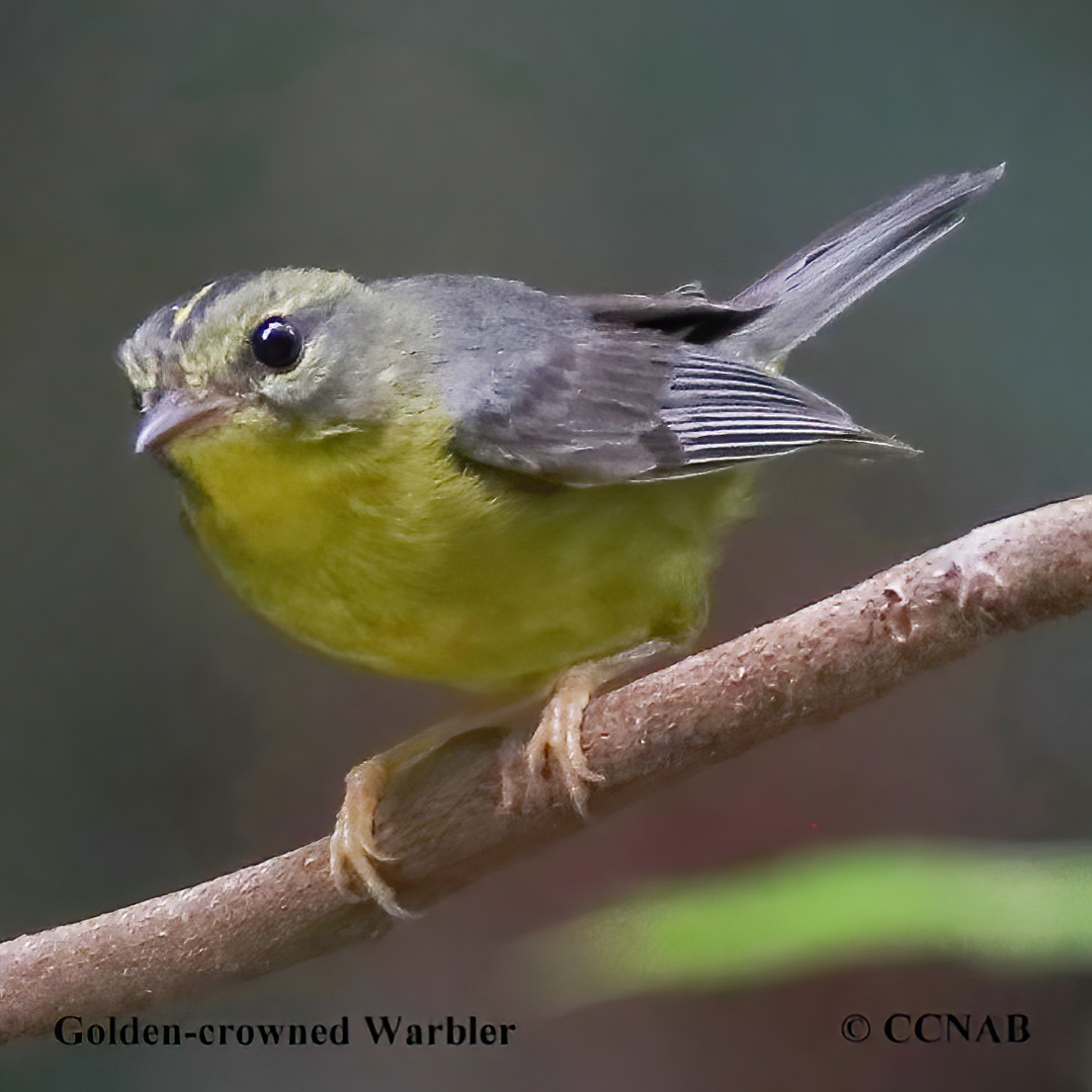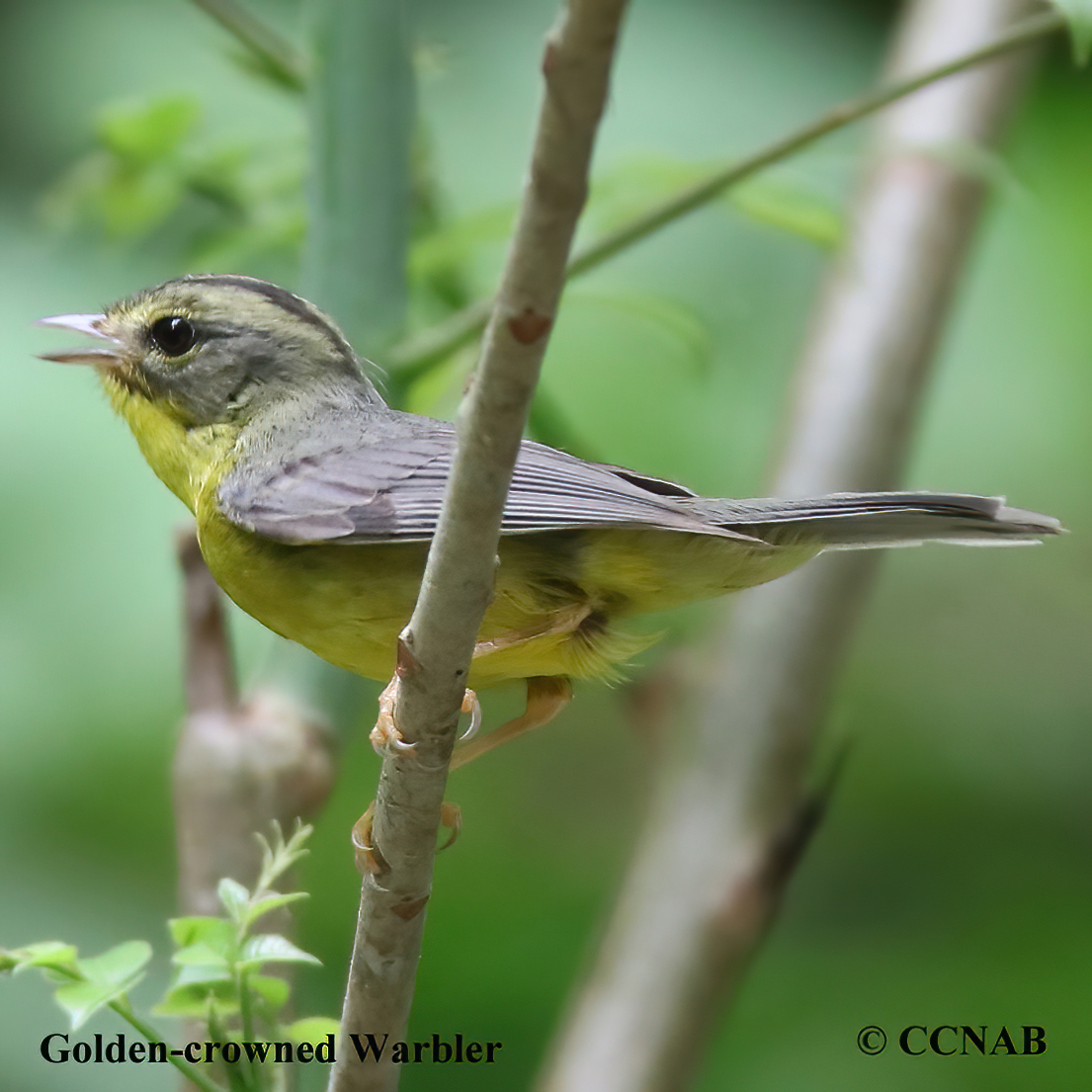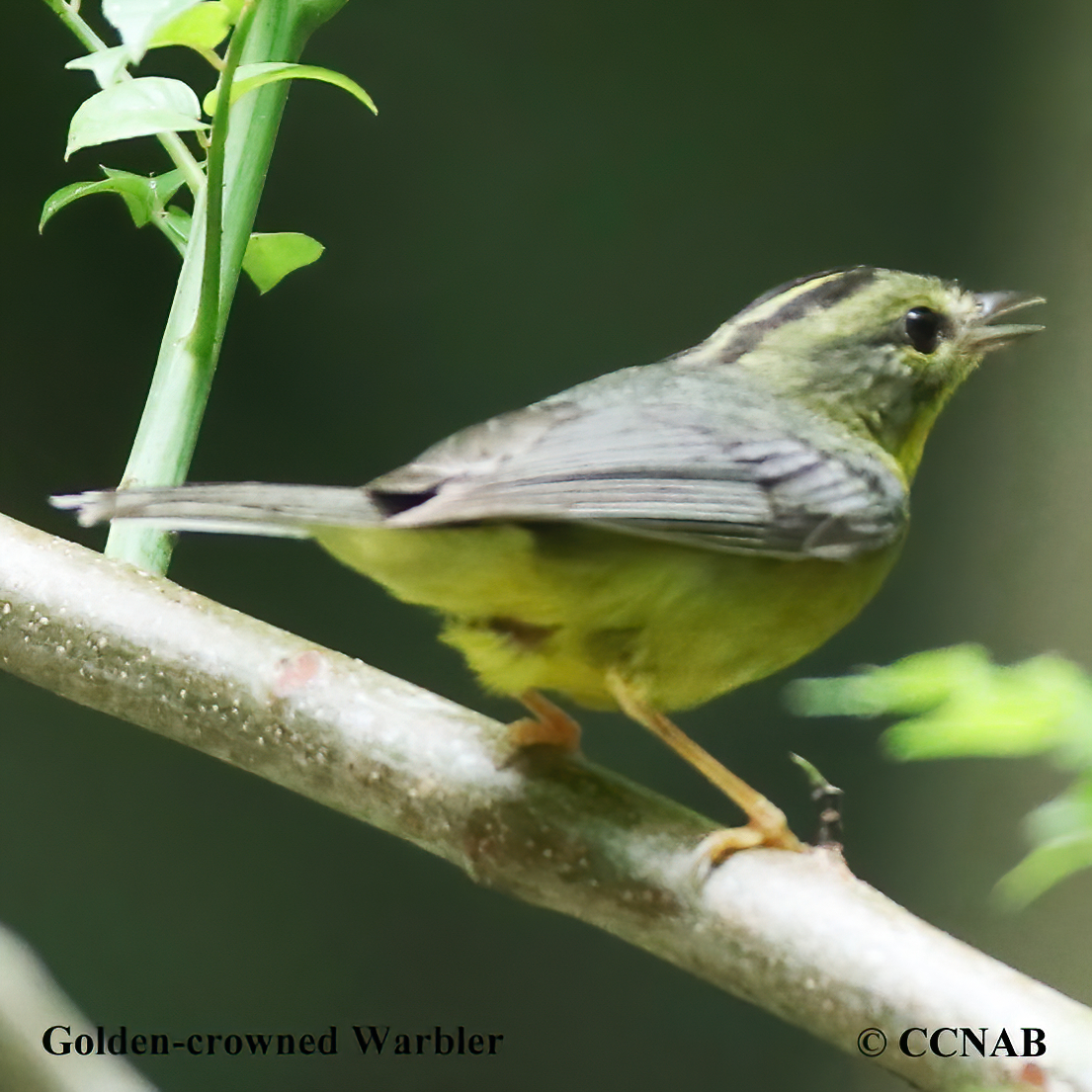North American Bird Search Box
This search box can be used to find bird species using bird's english, french or latin name, or to identify bird by its 4 letter Alpha Code
Field Guide for all the Birds of North America
Golden-crowned Warbler
4 Letter (english names) Alpha Code: GCRW (4)
Paruline à couronne dorée
Basileuterus culicivorus
Information, images and range maps on over 1,000 birds of North America, including sub-species, vagrants, introduced birds and possibilities
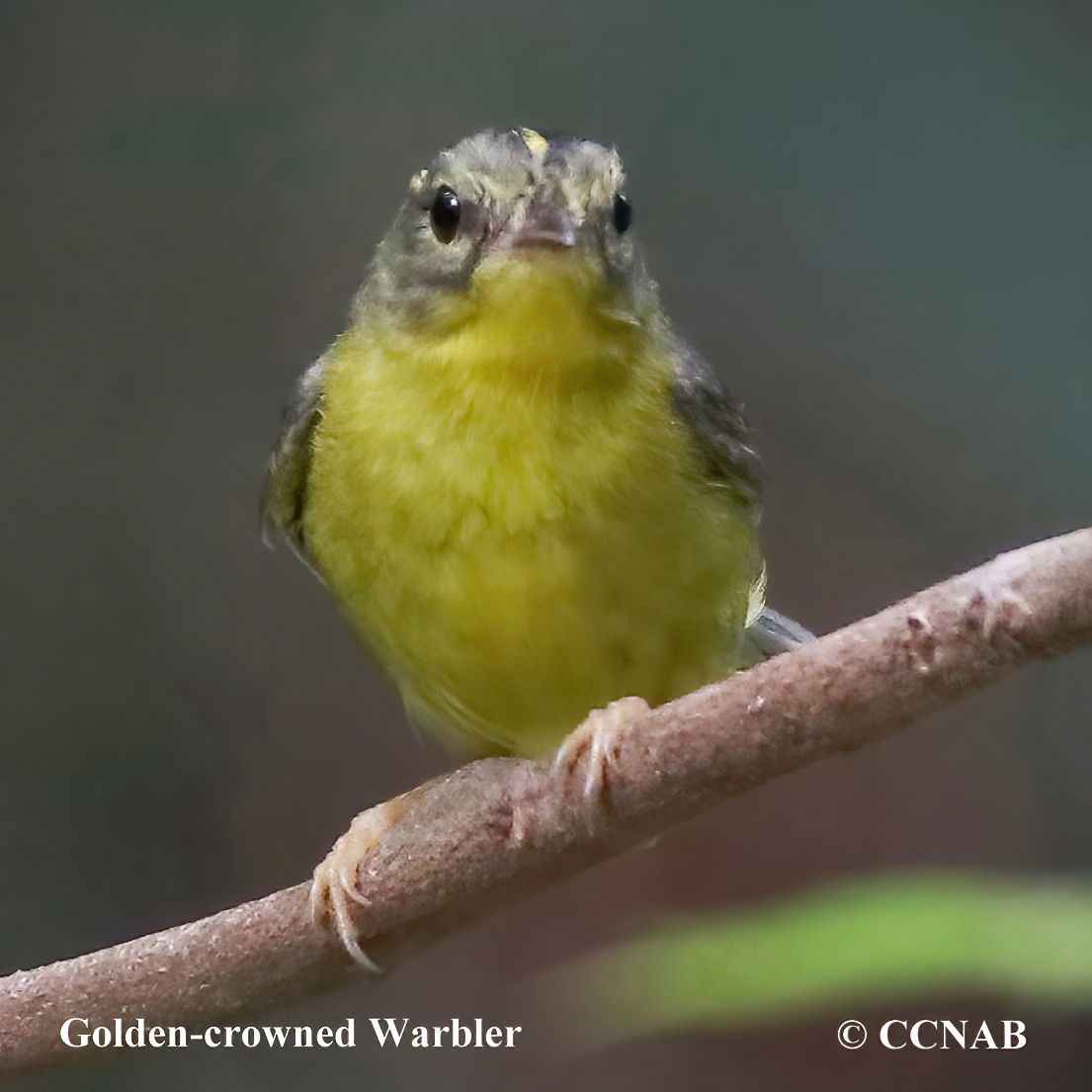
Species: The Golden-crowned Warbler (Basileuterus culicivorus) is not a native bird to North America. It is a native bird to Mexico, Central America and South America and is probably the most common warbler seen. It makes its habitat on the mountain slopes and is seen both on the Pacific coast, as well as along the Gulf coast in Mexico. It is found in coniferous and deciduous forests, preferring tropical surroundings with warm to moderate temperatures.
Distinctions: The male has a bright yellow throat, breast and undertail coverts. Grayish-brown auricular, yellow supercilious, two dark lateral crown stripes, with a yellow stripe through the center of the crown. The back, wings and tail are greenish-brown, no wingbars. The female is similar to the male, as are the juveniles who are duller in appearance.
Voice: Single call note, song sound like "zee zee zee seee, repeated over.
Nesting: Three to five creamy white coloured eggs, with brown markings. The nest is built on or near the forest floor. It is composed of rootlets, leaves, moss and lined with fine grasses.
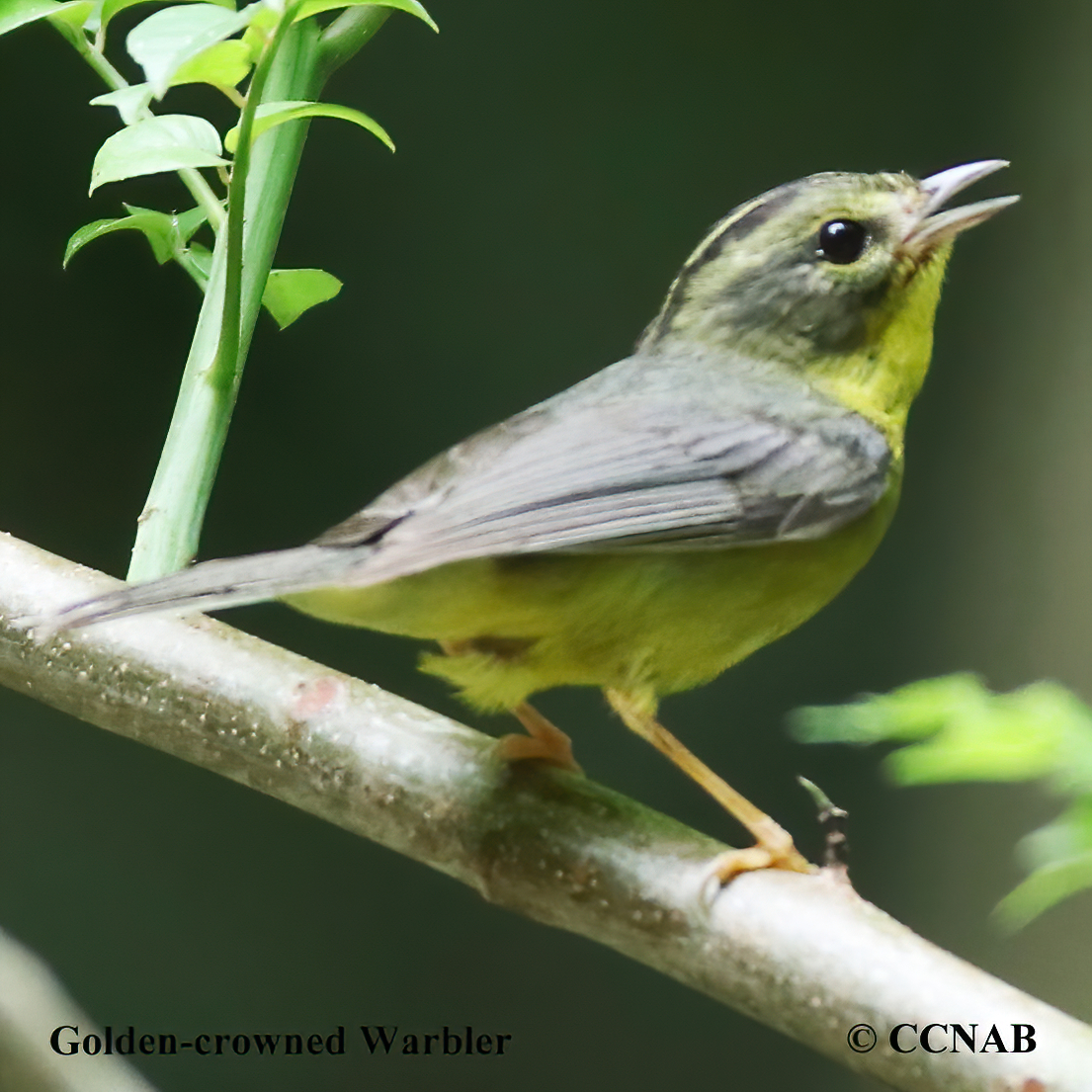
| B L | W W | W | Family | Latin Name |
|---|---|---|---|---|
| 5" 12.7cm | 7.5" 19.1cm | 0.37oz 10.5g | Parulidae | Basileuterus culicivorus |
North American Bird Calls
- Click here
- Summer
- Year Around
- Winter
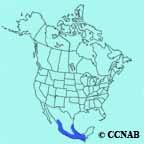
Distribution: Found along the mountain slopes in Mexico but not on the top of the plateau, as well as throughout Central America, including the greater parts of South America. It is a very common warbler and not threatened. It has been seen in Texas and is recognized as a vagrant visitor.
Reference to Other Bird Site:
ABA - American Birding Association This site represents an organization that maintains official records of all birds species that have been proven to have been seen inside the perimeters of the North American Continent and the surrounding bodies of water. Regular revised versions are posted to keep the bird list current at all times. This is the list used by all serious birders over their lifetime. You may be aware of the movie called the "Big Year". It was with this list that all the competing birders used in an attempt to set a new record as to how many bird species that could be seen by an individual birder in one calendar year.
